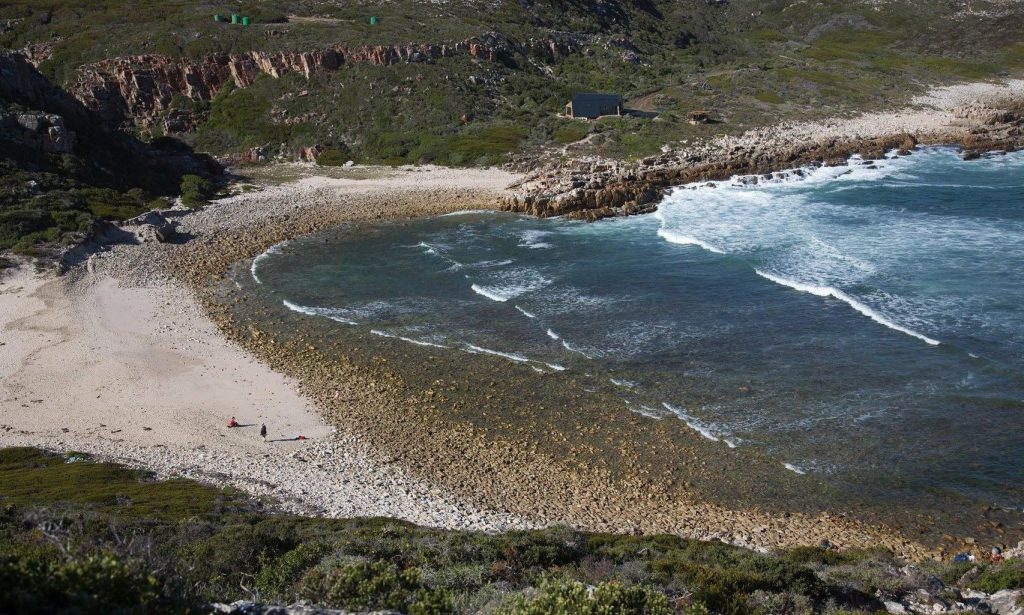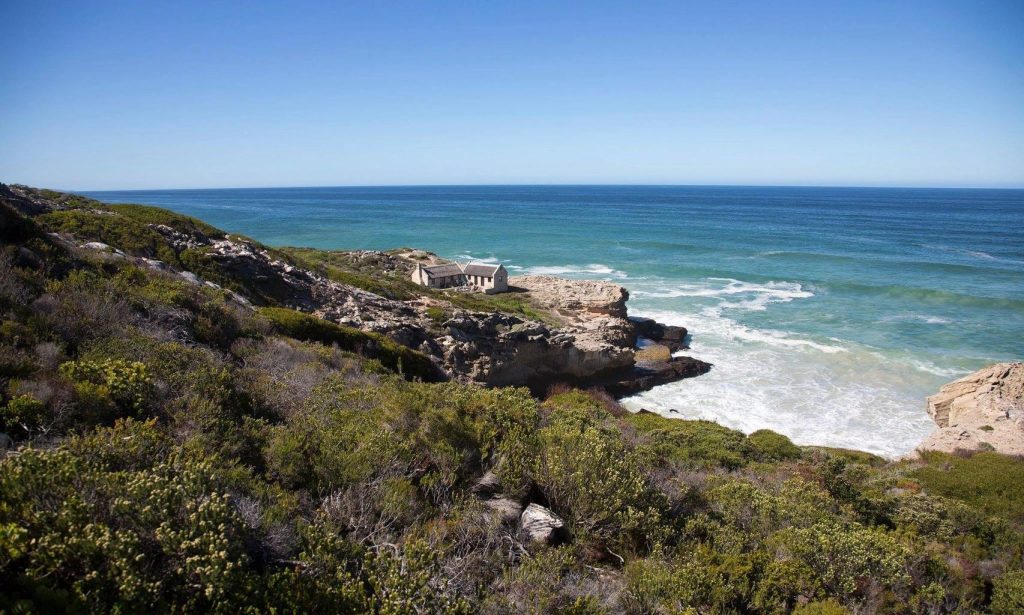When it comes to breathtaking natural beauty, South Africa has no shortage of awe-inspiring landscapes to explore. From its famous Kruger National Park to the stunning Garden Route, South Africa is a treasure trove for nature enthusiasts. One gem that stands out is the Whale Trail, a coastal hiking trail with no shortage of stunning destinations. From vibrant cities to vast savannahs, the country offers an array of experiences that cater to all travelers. One such destination that showcases the country’s natural wonders is the Whale Trail, located along the southern coast.

This article will provide detailed information about the Whale Trail, including its history, highlights, challenges, and practical information for hikers. We will also discuss the rich biodiversity of the De Hoop Nature Reserve, the importance of responsible hiking and conservation, and the best time of year to undertake the hike.
History of the Whale Path
The Whale Path was formally opened in 1991 and has since become one of the foremost prevalent hiking trails in South Africa. The trail was named after the southern right whales that relocate to the zone each year from June to November to mate and grant birth. These beautiful creatures can be seen from different points along the path, making the Whale Path an exciting and exceptional climbing involvement.
The De Loop Nature Reserve, where the Whale Path is found, was built in 1957 to secure the unique fynbos vegetation and the wealthy marine life along the coast. The Reserve covers a range of roughly 36,000 hectares. It is domestic to a wide variety of greenery and fauna, including over 260 species of birds, 86 species of warm-blooded creatures, and 1,500 species of plants.
The Sight
The Whale Trail is a hiking trail that stretches for approximately 55 kilometers along the De Hoop Nature Reserve coastline in the Western Cape province of South Africa. It is renowned for its dramatic scenery, diverse fauna, and incredible opportunity to see majestic Southern Right Whales in their natural habitat.

The trail has six sections, each offering unique beauty and challenges. The hike typically takes five days, allowing hikers to fully immerse themselves in the stunning landscapes and wildlife encounters along the way.
Starting at Potberg, the first section of the trail, hikers are treated to sweeping views of the Potberg Mountains and the Breede River Valley. As you ascend, watch for the endangered Cape vultures that inhabit the area. These grand winged creatures can frequently be seen taking off over, making a really awe-inspiring sight..
Moving on to the second section, hikers are led through a fynbos-covered landscape renowned for its rich biodiversity. Fynbos is a unique type of vegetation found only in the Cape region of South Africa, and it is home to many plant species, including the striking proteas. This section of the trail also offers the opportunity to spot various antelope species, such as the Cape mountain zebra and bontebok.
The third section of the Whale Trail takes hikers along the coastline, where the real magic begins. This is the perfect spot to witness the magnificent Southern Right Whales as they migrate from Antarctica to the warmer hotter of South Africa. Between June and November, these gentle giants can be seen breaching and playing in the ocean, providing an awe-inspiring sight for lucky hikers.
Moving into the fourth section, hikers encounter a rocky plateau with stunning coastal views. Dramatic limestone formations and vibrant wildflowers provide a picturesque backdrop as you make your way through the rugged terrain. Watch for seals, dolphins, and even the occasional Great White Shark that inhabit these waters.
The fifth section of the trail leads hikers through a diverse landscape, from thick indigenous forests to open grasslands. Along the way, you might encounter various bird species, including the Cape Sugarbird and the elusive Knysna turaco. The ever-changing scenery adds an element of surprise and adventure to the journey.
Finally, the last section of the Whale Trail brings hikers to the stunning Koppie Alleen, a pristine beach that stretches as far as the eye can see. Here, you can take a well-deserved break, dip your toes in the crystal-clear waters, and soak in the tranquility of your surroundings. It is the perfect ending to an unforgettable hiking experience.
With its diverse landscapes and abundant wildlife, the Whale Trail offers an extraordinary opportunity to reconnect with nature and marvel at the wonders of the South African coastline. Whether you are an experienced hiker or a nature enthusiast looking for a new adventure, this trail caters to all fitness levels. It provides an experience that will stay with you for a lifetime.
Details on Hiking the Whale Trail in South Africa
Way to go
To reach the Whale Trail in South Africa, travel to the De Hoop Nature Reserve, which is generally 260 kilometers east of Cape Town. Here are different choices for getting there:
- By car:
The N2 motorway connects Cape Town to the De Hoop Nature Save. Depending on traffic, the trip takes approximately three hours.
2. By shuttle:
Several shuttle services run between Cape Town and the De Hoop Nature Reserve. These services are valuable for hikers who don’t have to get to their transportation.
3. By Airplane:
The closest air terminal to the De Hoop Nature Reserve is in Cape Town. Hikers can lease a car or transport to the Reserve from there.
After you arrive at the De Hoop Nature Reserve, you must check-in and secure your hiking permit. The office is close to the Reserve’s entrance and is open every day from 7:30 a.m. to 4:00 p.m. Hikers should arrive at the office at slightest one hour before their walk starts to check in and get their orientation briefing.
Hikers must stop their vehicles at the Potberg Environmental Education Centre, which is around 7 kilometers away from the reserve office. The Reserve offers a shuttle service to bring hikers and their equipment to the trailhead at Koppie Alleen.
Hikers should aim to arrive at the Reserve at least one day before the beginning of their hike to enable adequate time to get licenses, go to the orientation session, and pack their hiking equipment and supplies.
When to Visit
The most excellent time of year to hike the Whale Path in South Africa is during the southern half of the globe’s winter and spring months, from June to November. This can be when southern right whales relocate to the region to mate and deliver birth, and hikers have a great chance of seeing these radiant animals from different points along the path.
The climate during this time of year is gentle, with cooler temperatures and lower humidity than in summer. However, hikers should arrange for various climate conditions, including strong winds, rain, and periodic snowfall at higher heights.
It’s vital to note that the path is closed during the winter months of May to August due to the high risk of terrible climate. So, if you’re planning to hike the Whale Path, plan your trip to coincide with the open season from September to November or during the spring and summer months from December to April when the climate is hotter and drier.
Accommodation

Accommodation on the Whale Path in South Africa is given within the frame of basic wilderness huts or campsites. There are overnight stops at five diverse areas along the trail, each of which encompasses an assigned campsite or hut.
The huts are fundamental structures that protect from the elements, with bunk beds and sleeping cushions for resting. Each cabin moreover has a chimney for cooking and warming. The campsites are close to the huts and have assigned regions for pitching tents. Each campsite has modest restroom facilities.
The huts and campsites are basic, and explorers should not anticipate extravagant housing. However, the staggering characteristic view and the opportunity to see natural life make the Whale Path exceptional.
Food and Water
Food and water are basic things that hikers need to bring with them on the Whale Path in South Africa. No shops or eateries are along the path, so hikers must be self-sufficient and carry their food and drink supplies for the hike.
Water is essential, as there’s no reliable water source along the path. Hikers should bring sufficient water for the entire hike and additional water for cooking and washing. Water can be collected from tanks at each campsite but must be treated or boiled before drinking.
As for food, hikers ought to bring lightweight, high-energy foods that are simple to plan and do not require refrigeration. A few great choices include a path blend, energy bars, dried fruits and nuts, and instant noodles or soups. Hikers can also bring fresh, natural products and vegetables for the first day of the climb, but these should be lightweight and non-perishable.
Hikers will have to bring cooking hardware, including a stove, pots, and utensils, to prepare their own dinners at each campsite. It’s important to note that fires are permitted in assigned chimneys or braai zones, so hikers should arrange to use a camping stove for cooking.
In general, it’s vital for hikers to arrange their food and water supplies carefully and bring sufficient to final for the entire hike.
Swimming
Due to strong currents and freezing water temperatures, swimming is often not suggested along South Africa’s Whale Trail. The trail’s shoreline can be dangerous, with rocky outcrops, erratic waves, and water temperatures as low as 10-15°C (50-59°F).
Furthermore, the area is noted for its significant white shark population, which is drawn to the seals and other nearby marine fauna. Swimmers may draw sharks’ attention, increasing the likelihood of a shark attack.
For these reasons, it is strongly advised that walkers along the Whale Trail not attempt to swim in the ocean. Hikers should instead enjoy the breathtaking coastline vistas from a safe distance and observe the wonderful marine animals from the shore.
Hikers who choose to swim should use the utmost caution and swim only in authorized, safe swimming places. To guarantee the safety of swimmers, these locations will be prominently designated and supervised by park rangers.
Overall, while the Whale Trail provides a unique opportunity to see the natural beauty of South Africa’s coastline, hikers should always emphasize safety and be conscious the potential threat of swimming in the water.
Challenges of Hiking the Whale Path
While the Whale Path offers a dazzling normal view and the opportunity to see unimaginable natural life up close, it is also a challenging hike that requires a direct level of fitness and perseverance. Here are a few of the challenges that climbers may confront on the path:
Steep climbs and descents:
The path includes a few steep climbs and descents, especially between day two and day three. These segments can be physically demanding and require balance and stamina.
Rough coastal landscape:
The trail passes along the rough coastline, which can be elusive and uneven in places. Hikers have to observe their steps and be prepared for a few scrambling over rocks.
Exposure to the elements:
The trail is exposed to the wind and climate, especially along the coastline. Hikers ought to be prepared for strong winds, rain, and sudden changes in climate conditions.
Carrying camping equipment and supplies:
Hikers are required to carry all of their claim camping adapt and food supplies for the climb, which can be challenging, especially for those not acclimated to carrying overwhelming loads.
Limited facilities:
There are no facilities along the path, except for basic toilets at each campsite. Hikers have to be self-sufficient and carry everything they require with them.
Practical Information for Hikers
Here are a few practical tips and information for hikers who are arranging to attempt the Whale Path:
Licenses:
Hikers must get a permit before beginning the trail. Licenses are limited, and hikers ought to book well in development.
Camping:
Hikers must camp only at designated campsites and huts. Camping isn’t allowed outside of these assigned regions.
Fires:
Fires are only permitted in assigned chimneys or braai zones. Hikers must not begin fires anywhere else.
Waste:
Hikers must carry out all of their garbage and dispose of it appropriately. Littering is strictly prohibited.
Natural life:
Hikers should keep a safe distance from southern right whales and other natural life they encounter along the path. Hikers should respect the rights and privacy of other hikers on the path.
Conservation and Responsible Hiking
The Whale Path is found within the De Circle Nature Reserve, domestic to wealthy differences of greenery and fauna. It’s important for hikers to be mindful of their effect on the environment and to practice capable climbing and preservation. Here are a few tips for capable climbing:
- Carry out all rubbish and dispose of it appropriately.
- Reduce noise levels to the barest minimum, especially in the early morning and late evening.
- Respect the rights and privacy of other explorers on the path.
- Don’t irritate or feed any natural life encountered along the path.
- Utilize assigned chimneys or braai ranges for cooking and warming.
Conclusion
In conclusion, the Whale Trail in South Africa is a true gem that combines breathtaking landscapes, diverse wildlife, and the unique opportunity to witness Southern Right Whales up close. Whether you are a nature lover, adventure seeker, or simply looking for an unforgettable experience, this trail promises to deliver all that and more. So tight ace up your shoe, pick up your camera device, and embark on an epic hiking adventure along the stunning southern coast of South Africa. It’s a journey you won’t want to miss.

